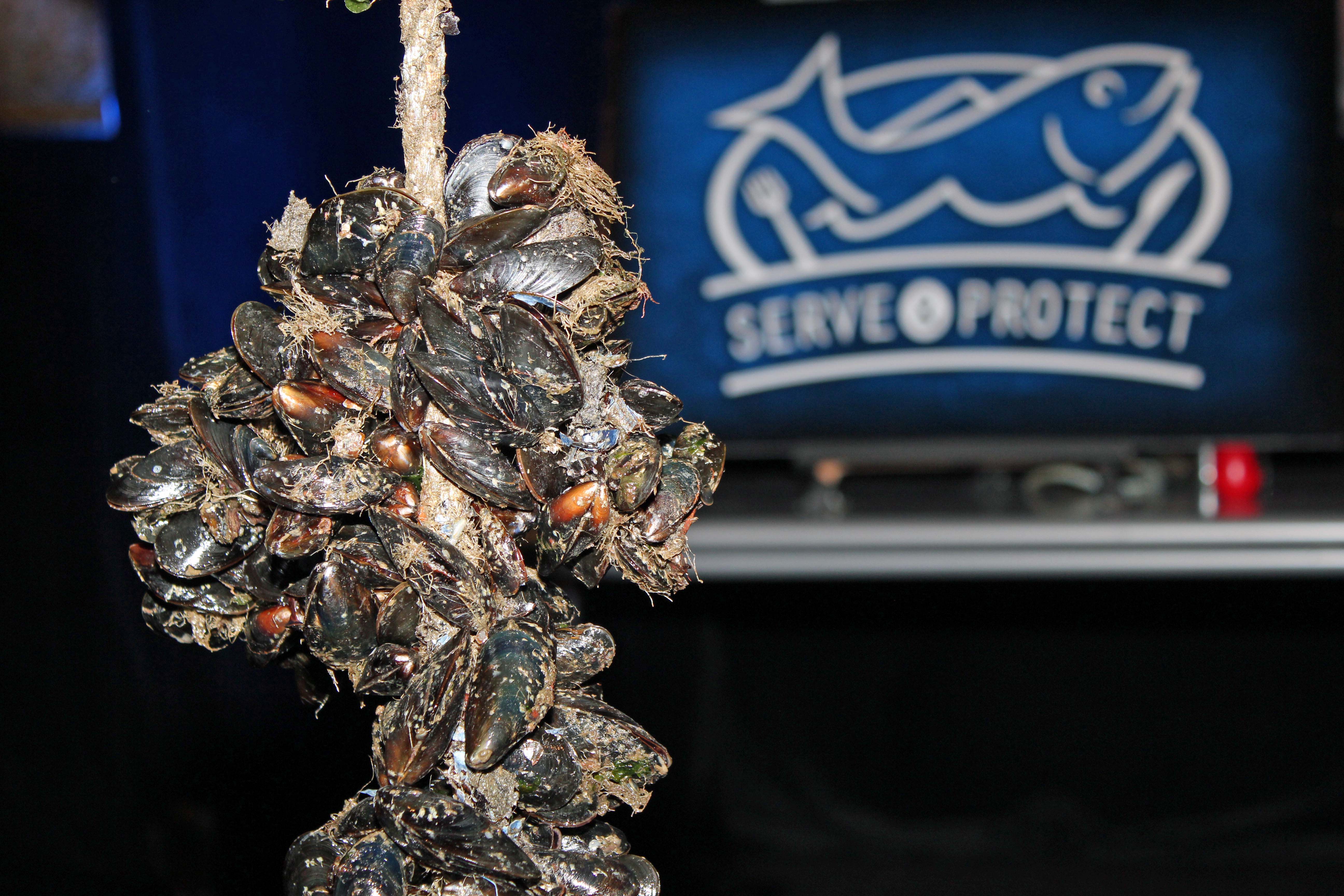Eat right, eat fresh, eat seafood
Hey, when was the last time you were told that your consumption of anything was good for the planet?
Well, today, we can tell you just that, thanks to the Tennessee Aquarium and its "Serve and Protect" cooking demonstrations Thursday. That's right: Eating fresh mussels is not only good for you, it's also good for the ocean. And if it's good for the ocean, it's good for the planet.
The mussels are cheap, easy to clean, easy to cook, easy on the tongue, easy to farm in the ocean, offer a tremendous economic opportunity to U.S. coastal residents and -- best of all -- they are Mother Nature's engineering miracles to filter our oceans. Just one mussel, slightly smaller than the palm of your hand, cleans two to four gallons of water an hour.
Not all seafood eating is sustainable, that is, good for the oceans and planet and for us. For instance, the demand for large predatory fish such as Bluefin tuna, Atlantic cod and Chilean sea bass make for classic examples of how not to manage fisheries. Consequently, as we've lost those top predators, we have begun "fishing down the food web."
But mussels, especially Blue Mussels, can be commercially farmed on ropes hung into the ocean from rafts, and as the mussels grow, they work for us by cleaning the water. What a deal! That's not just sustainable, it's also restorative, according to Chef Barton Seaver. Strict regulations on where they are farmed mean they are safe for us.
Fresh mussels cost about $4.75 a pound at Sirens Seafood on Signal Mountain, or about $7 to $8 for a two-pound bag at Whole Foods or Fresh Market. They cook in just minutes with whatever is in your fridge and cabinet for seasonings. Seaver even used some Signal Mountain pine boughs and a few orange slices! For a different taste he used rosemary, fruity red wine and butter. French Chef Nico Romo used bacon, coconut milk, lime, ginger and shallots.
Mussels have just as much protein as beef, but 30 percent less fat and calories. So stretch your palate and save the planet.
Vocational school discussion begins
Hamilton County Commissioner Tim Boyd is following up on a campaign pledge to get discussion started on a new county vocational school -- something just about every Board of Education and County Commission candidate this year said is needed.
Not every student wants or needs a four-year college degree, candidates agreed. And industries in the Chattanooga area need more qualified workers, Boyd notes.
He would like to see a vocational school much like the former Kirkman Technical High School that operated for decades in downtown Chattanooga, but he suggests a new $15 million to $18 million facility be built adjacent to the STEM school on the campus of Chattanooga State Community College.
One problem with the suggestion might be location, location, location. Where a vocational school is most needed is downtown, central to inner-city youngsters who have the least transportation opportunity and greatest chance of dropping out of regular school.
But Boyd has a worthwhile suggestion for that too: Inner-city kids could get there by flashing their school IDs to get a free ride on a CARTA bus, which serves the Chattanooga State campus six miles from downtown.
Keep talking it up, commissioner. If this is not the best idea, perhaps some fellow leaders will jump in with alternatives.
The county does need at least one additional true-life skills school to supplement Sequoyah Vocational School in Soddy-Daisy. Sequoyah, with 356 students, is 20 miles away from downtown.

